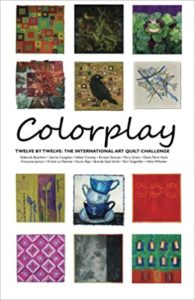I loved seeing Diane's
spice geography lesson this week. When the European spice traders came to Australia in the 17th century, they surveyed the unpromising landscape and did not linger long. Meanwhile, the indigenous people knew exactly where to find a bounty of food and flavours including
yakajirri (bush tomato), quandong, Kakadu plums,
wattleseed, pepperberry, lilli pilli,
finger limes and
lemon myrtle.

PS: This quilt is made from some of my "triad" dyed fabrics. See my
tutorial.



19 comments:
Maybe it’s for the better the European spice traders weren’t that clever!
Love your quilt and the changing directions of the quilting! Really beautiful!
The movement and line of this quilt are wonderful. The colors pop. I find it simply delicious.
I am loving this one, Brenda! Just loving it :)
Awesome, Brenda!
This is beautiful of course, and I am always so impressed by your stitching, and you're choices on what to have stand out and what to receed.
I love this one with the lines and colors. I want it!
I see you threw in some green, too! Can't miss with the chartreuse as a neutral. I love this. I love the colors and quilting lines and the shapes that you have created. It has great movement.
Ooh. This just makes me happy looking at it and yes, I agree with Gerrie that the green is a perfect addition. You do lines so beautifully and this color and line combination has great excitement.
Thanks for the Australian spice lesson. Your creation is a fitting celebration of these spices.
Like Karen's this is so wonderfully evocative without being literal. I love the implicit energy and movement.
Gorgeous! Your colours are so rich.
Brenda this is magic
The piecing and the way you've used these colors is really wonderful! I have never before identified your work as particularly "Australian" before--not that I even know what that would mean--but somehow this piece just says "Australia!" to me--even before I read the description.
What's this about the spice traders coming to Australia is the 17th century????? Australia was founded in 1788......
This is such an interesting chapter in Australia's maritiime history. The Dutch were intrepid adventurers and canny traders. During the 17th century, they established a new route by sailing directly from their new port of call at Cape Town, South Africa, to western Australia (utilizing the 'Roaring Forties') and then on to Java.
The Dutch exploration pre-dates the arrival of Cook (1770) and the arrival of the First Fleet (1788) by more than a century.
The Dutch ship Duyfken is the first recorded ship to visit Australia having sailed from Banda to the Pennefather river in Queensland in 1606. This article Duyfken ship is the Spice of History refers to the mapping of the west coast of York Peninsula at this time.
Batavia, a recent book, by Peter FitzSimons, chronicles the story of the survivors of the shipwrecked Dutch trading boat of the same name that ran aground on the Abrolhos Islands off the coast of Western Australia.
The following is a direct quote from the Australian Government/Department of Trade and Foreign Affairs website:
"The first recorded European contact with Australia was in March 1606, when Dutch explorer Willem Janszoon (1571–1638) charted the west coast of Cape York Peninsula in Queensland. Later that year, the Spanish explorer Luis Vaez de Torres sailed through the strait separating Australia and Papua New Guinea. Over the next two centuries, European explorers and traders continued to chart the coastline of Australia, then known as New Holland. In 1688, William Dampier became the first British explorer to land on the Australian north west coast. It was not until 1770 that another Englishman, Captain James Cook, aboard the Endeavour, extended a scientific voyage to the South Pacific in order to further chart the east coast of Australia and claim it for the British Crown."
PS: The Batavia shipwreck was in 1629.
This is a wonderful design and your colors are very vibrant and lovely.
Like JB I enjoyed your description of what inspired your piece. The colours a very vibrant. I must have a look at your tutorial. Oh Yes, I also liked your succinct history lesson (giggle).
Hi Brenda love the combination it looks so spicy :O) lol
Post a Comment